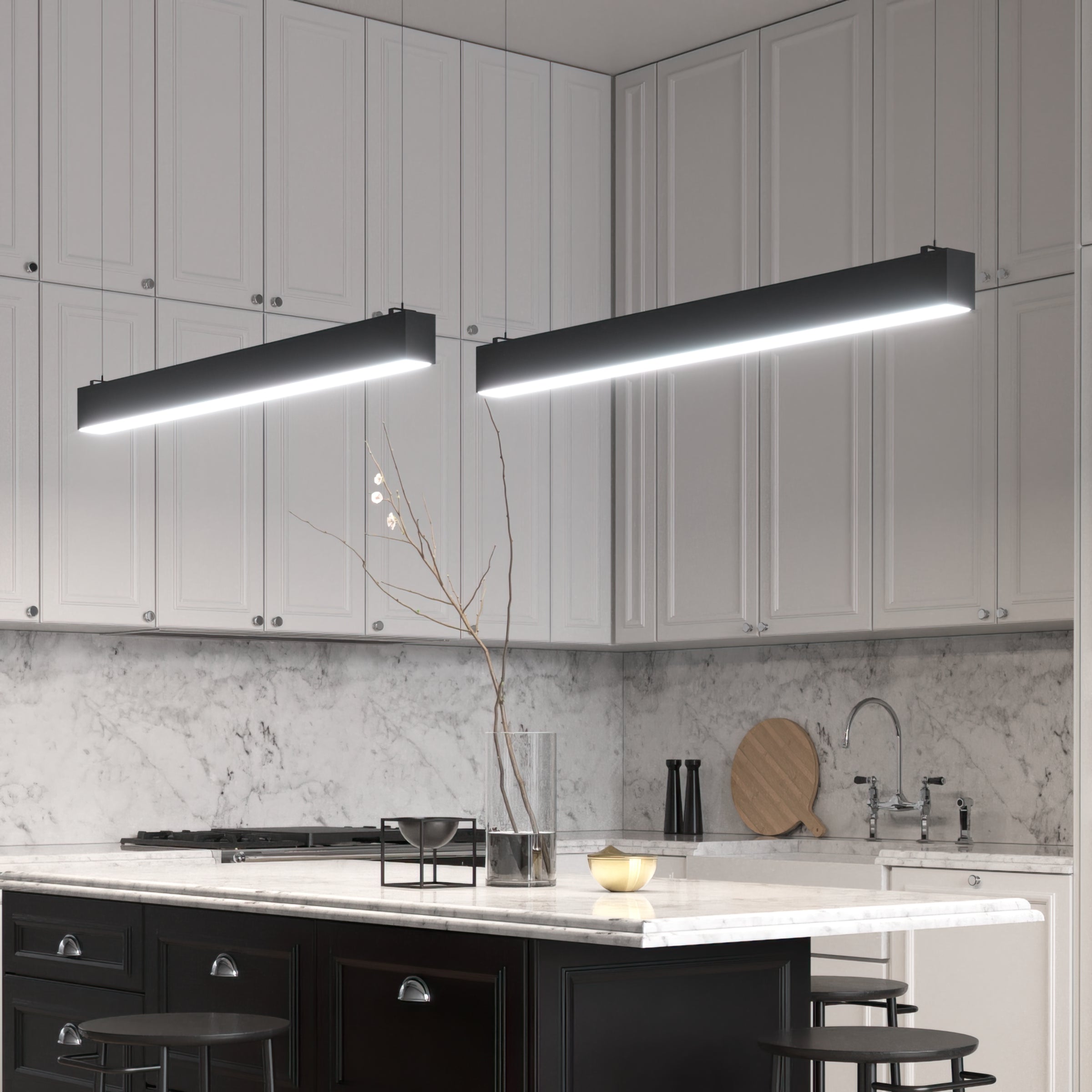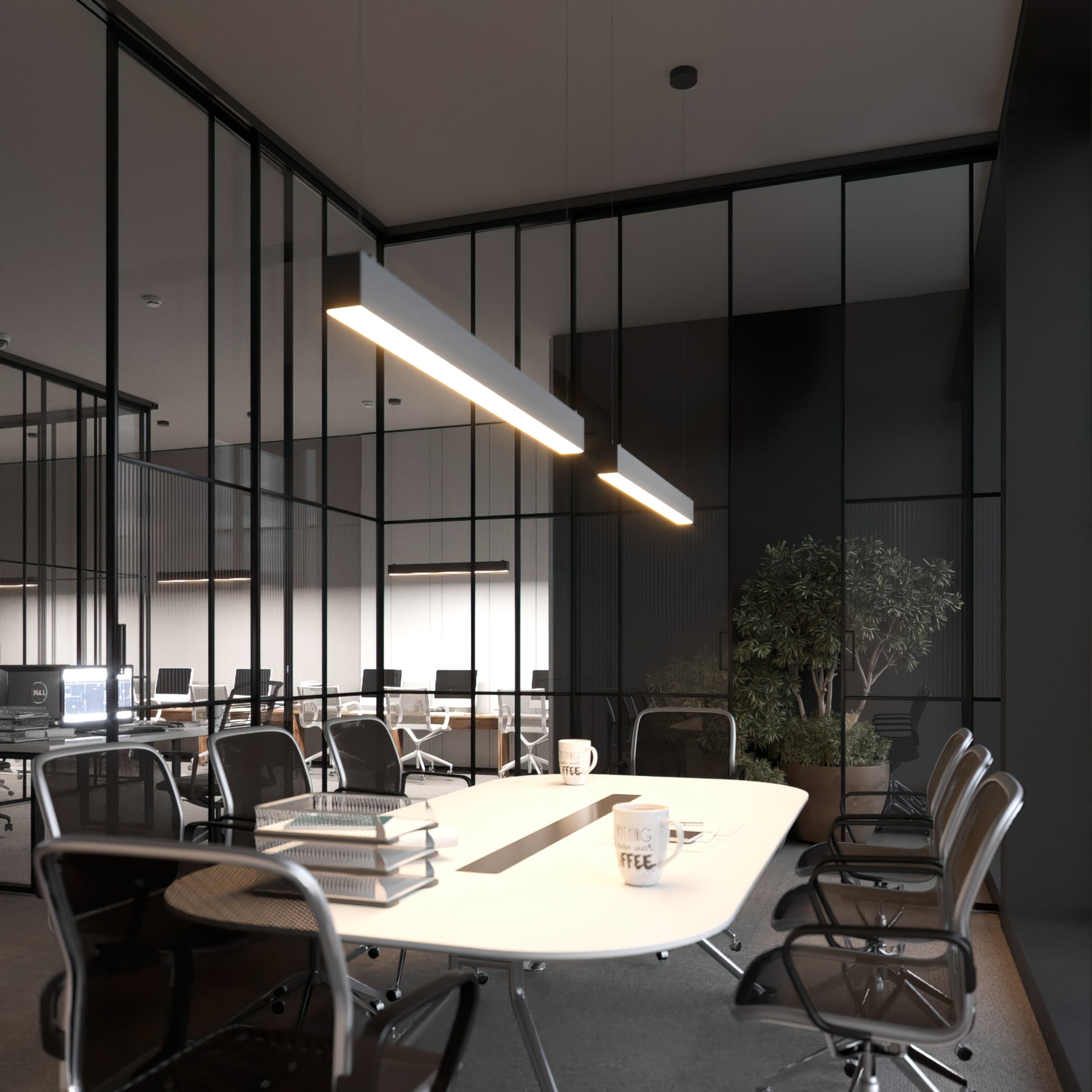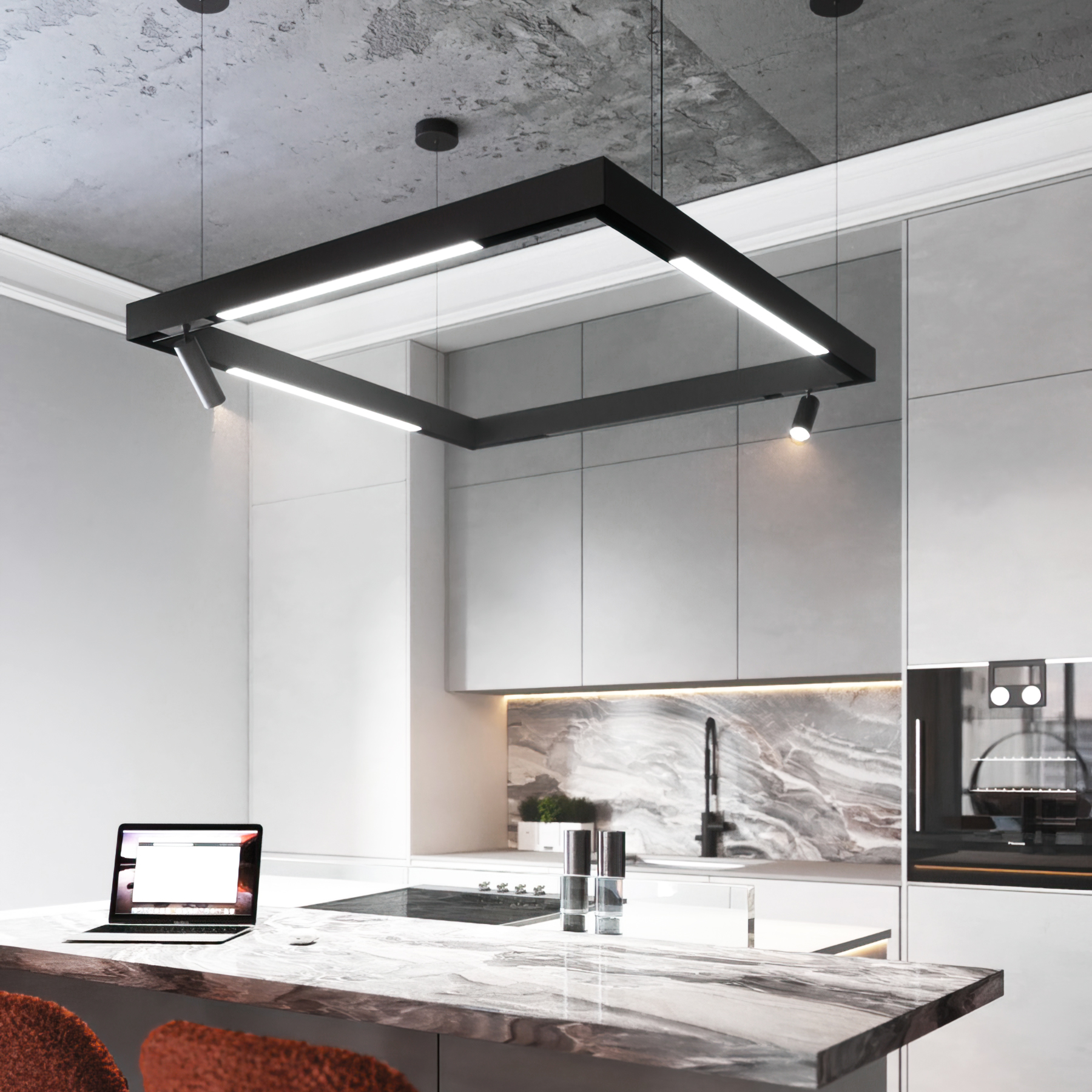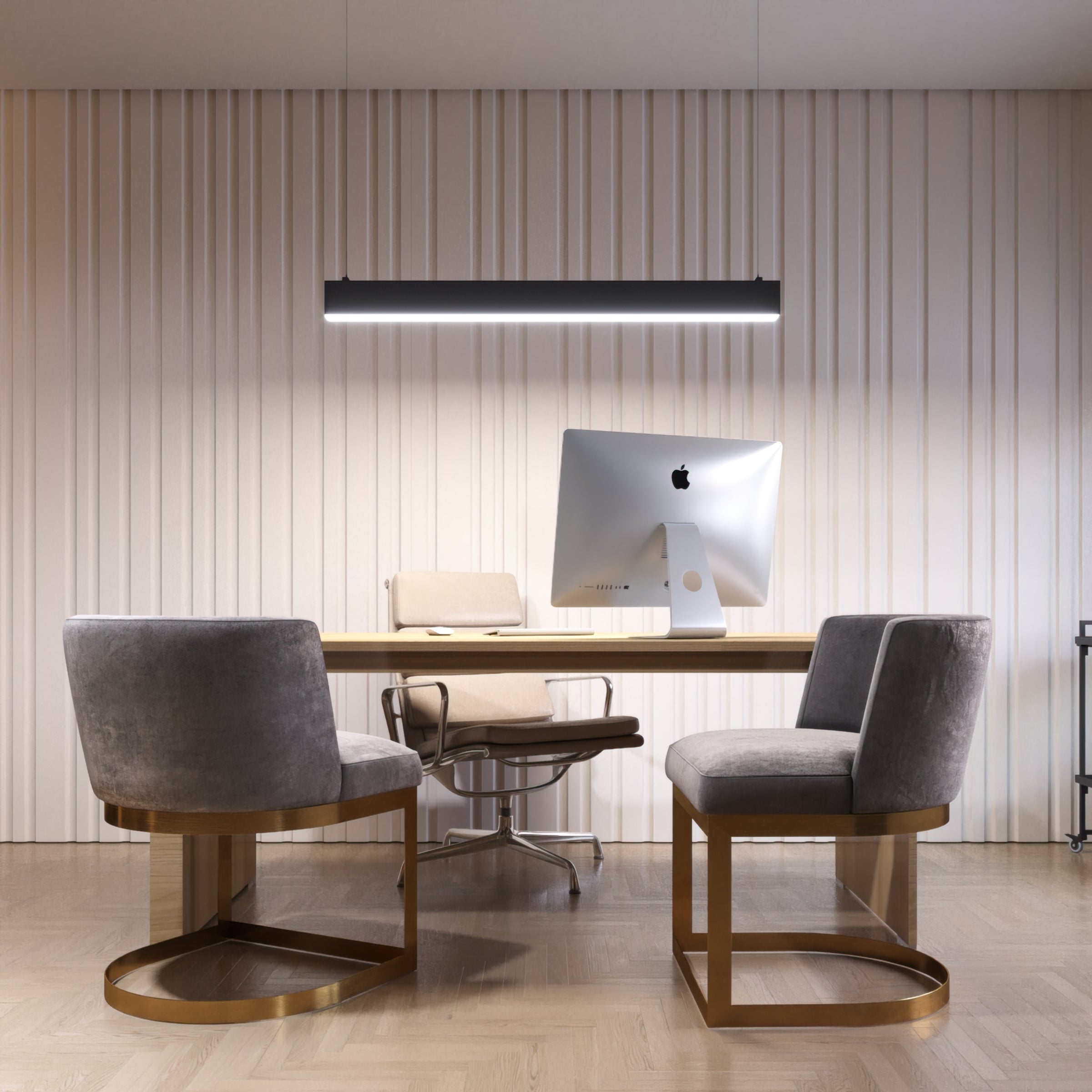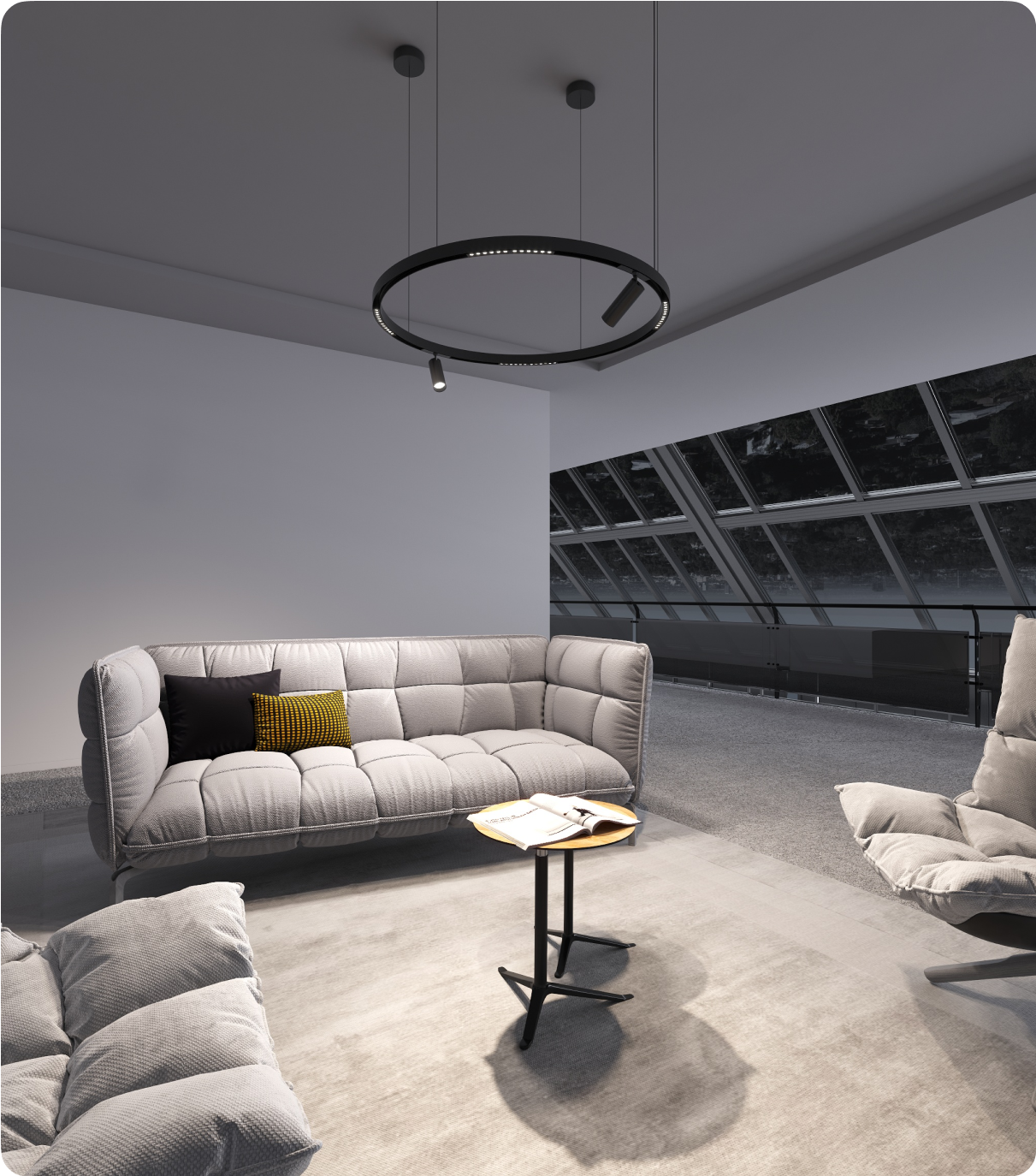Small Kitchen Lighting Ideas
Lighting is a crucial element in any kitchen design, especially in small kitchens where space and functionality are of utmost importance. Effective lighting can transform a cramped, dimly lit area into a bright, welcoming, and efficient workspace. It not only enhances the visual appeal but also significantly impacts the usability of the kitchen, making everyday tasks easier and more enjoyable. Good lighting can highlight key areas, improve safety, and create an inviting atmosphere, ultimately making the kitchen feel larger and more open. But what is the best lighting for a small kitchen?
This guide explores various lighting solutions specifically tailored for small kitchen spaces. Whether you're looking to brighten up your cooking area, add a touch of style, or improve overall functionality, we've got you covered. From under-cabinet lighting and pendant lights to innovative LED options and smart lighting systems, we'll delve into small kitchen lighting ideas to help you make the most of your small kitchen. Get ready to illuminate your culinary space in ways you never imagined, turning it into a bright, stylish, and highly functional heart of your home.

Types of Lighting
When it comes to designing the perfect lighting scheme for a small kitchen, understanding the different types of LED lighting is essential. Some small kitchen ceiling lighting ideas are ambient, task, and accent lighting. Each type plays a unique role in creating a well-rounded and efficient lighting design, and a combination of all three ensures both adequate illumination and aesthetic balance.
Ambient Lighting
Ambient lighting serves as the primary source of light in your kitchen. It provides overall illumination, ensuring the entire space is well-lit and comfortable to work in. This type of lighting sets the tone and mood of the room, making it feel inviting and spacious. In small kitchens, small kitchen light fixtures, such as flush-mount ceiling lights or LED panels, are popular choices for ambient lighting. These fixtures distribute light evenly across the room, reducing shadows and dark corners, which can make the space appear larger and more open.
Task Lighting
Task lighting focuses on specific areas where detailed and focused light is needed for various kitchen activities. This type of lighting is crucial for enhancing visibility and safety during tasks such as chopping vegetables, reading recipes, or cooking on the stove. Under-cabinet lights are an excellent option for task lighting, as they illuminate countertops and work surfaces without casting shadows. Other effective task lighting solutions include pendant lights over kitchen islands or work areas and strip lights installed under shelves or cabinets. By ensuring that key areas are well-lit, task lighting makes the kitchen more functional and efficient.
Accent Lighting
Accent lighting adds depth and dimension to the kitchen, highlighting architectural features, decor, or specific areas you want to draw attention to. This type of lighting creates visual interest and can significantly enhance the overall aesthetic of your kitchen. LED strip lights can be used as accent lighting to highlight cabinets, shelves, or even the toe-kick area beneath lower cabinets. Spotlights or directional recessed lights can focus on artwork, backsplashes, or unique design elements, adding a touch of elegance and style to your kitchen. Accent lighting not only beautifies the space but also contributes to the ambiance, making the kitchen feel more personalized and inviting.
Combining All Three Types
A well-rounded LED lighting design in a small kitchen involves integrating ambient, task, and accent lighting. This combination ensures that the space is adequately illuminated for all activities while providing aesthetic appeal and enhancing the kitchen's overall atmosphere. By strategically placing different types of lighting fixtures, you can create a bright, efficient, and visually pleasing environment that maximizes the potential of your small kitchen.
Lighting Ideas for Small Kitchens
Recessed Lighting
Recessed LED lights are a versatile and functional option for small kitchens. When installed directly into the ceiling, they provide a sleek, discreet illumination source. They are ideal for general lighting, ensuring the entire kitchen is well-lit, and can also be strategically placed for task lighting, such as above countertops or the stove. Additionally, recessed lights can serve as accent lighting to highlight specific areas or features, adding depth and visual interest to the kitchen.
Under Cabinet Lighting
Under-cabinet lighting is an excellent way to illuminate workspaces in small kitchens. Placing lights directly under cabinets eliminates shadows on countertops, making preparing food and performing other tasks easier. Various lights can be used for this purpose, including slim fixtures that fit neatly under cabinets, puck lights that provide focused illumination, and LED strips that offer a continuous line of light. Under cabinet lighting enhances functionality and adds a modern touch to the kitchen's design.
Lighting Centerpiece
A lighting centerpiece can serve as a focal point in your small kitchen, adding a touch of elegance and style. For kitchens with low ceilings, flush or semi-flush mount fixtures are ideal as they provide ample light without taking up too much space. These fixtures come in a variety of designs, from sleek and modern to ornate and traditional, allowing you to choose one that complements your kitchen's decor. A well-chosen centerpiece light can elevate the overall aesthetic of your kitchen while ensuring adequate illumination.
Pendant Lighting
Pendant lights are a versatile and stylish option for task lighting in small kitchens. They can be hung over kitchen islands, breakfast bars, or dining areas to provide focused light where it's needed most. In kitchens without islands, pendant lights can be placed over the sink or in a row along a countertop to create a well-lit workspace. Available in a range of styles and finishes, pendant lights can add a decorative element to your kitchen while improving its functionality.
Inside Cabinet Lighting
Lighting inside cabinets can be both functional and decorative. It helps you easily locate items, especially in deep or dark cabinets, and adds a soft glow that enhances the kitchen's ambiance. LED strips are a popular choice for inside cabinet lighting, as they are easy to install and provide a consistent light source. Glass shelves paired with LED lights can create a beautiful display area for dishware or collectibles, adding an elegant touch to your kitchen.
Backlight Open Shelving
Backlighting open shelving is a great way to enhance the aesthetics of your kitchen. By installing LED strip lights along the back of shelves, you create a warm, inviting glow that highlights your kitchenware and decor. This installation process is straightforward: simply adhere the LED strips to the back edge of the shelves and connect them to a power source. Backlighting can transform open shelving into a stunning visual feature, making your kitchen feel more dynamic and stylish.
Wall Sconces
Wall sconces can provide both ambient and task lighting in small kitchens. They are particularly useful in areas where additional light is needed, but space is limited. Sconces can be placed on either side of a window, above a sink, or along a backsplash to create a well-lit and visually appealing space. They come in a variety of styles, from classic to contemporary, allowing you to choose fixtures that match your kitchen's design.
Track Lighting
Track lighting is an excellent alternative to recessed lights, offering flexibility and adjustability. Tracks can be installed in various patterns to suit your kitchen layout, and individual lights can be adjusted to direct light exactly where it's needed. This makes track lighting ideal for both general and task lighting. It's a great option for small kitchens, as it provides ample light while allowing you to highlight specific areas or features.
Light Up Drawers
Installing LED lights inside drawers is a practical and convenient lighting solution. These lights make it easy to see the contents of your drawers, even in dimly lit kitchens. Sensor-controlled activation ensures that the lights turn on automatically when the drawer is opened and turn off when it's closed. This feature not only enhances functionality but also adds a touch of modern convenience to your kitchen.
Small Kitchen Lighting Design Tips

Use Lighting to Define Spaces
In a small kitchen, effective lighting can help define and separate different areas, enhancing both functionality and aesthetics. Consider zoning your kitchen by using distinct lighting setups for different tasks. For instance, pendant lights can define a dining or breakfast area, while under-cabinet lighting can highlight preparation spaces. Use separate controls for each zone, allowing you to adjust the lighting based on your activities. This approach not only improves usability but also adds visual interest, making your small kitchen feel more organized and spacious.
Keep Scale in Mind
When selecting lighting fixtures for a small kitchen, it's crucial to keep scale in mind. Oversized fixtures can overwhelm the space, while too-small lights may not provide adequate illumination. Choose fixtures that are proportionate to the size of your kitchen. For example, slim, low-profile recessed lights or compact under-cabinet lights are ideal for providing ample light without crowding the space. Similarly, opt for pendant lights that complement the kitchen's size and layout. Keeping scale in mind ensures that your kitchen remains balanced and harmonious, both in terms of functionality and design.
Color Temperature is Everything
The color temperature of LED lighting plays a significant role in creating the desired atmosphere in your kitchen. Color temperature is measured in Kelvins (K), and it ranges from warm (yellowish) to cool (bluish) tones. For residential kitchens, a color temperature range of 2700K to 3500K is recommended. This range provides a warm, inviting light that is bright enough for tasks but also comfortable and cozy. Warmer temperatures (around 2700K) create a relaxed ambiance, ideal for dining areas, while slightly cooler temperatures (around 3500K) are better for task lighting, providing clear visibility. Selecting the appropriate color temperature helps create a pleasant and functional kitchen environment.
Don't Overdo It
While it's important to have adequate lighting, it's equally important not to overdo it. Overloading a small kitchen with too many fixtures can make the space feel cluttered and overwhelming. Focus on a few key lighting solutions that address your primary needs. For example, combine ambient lighting with targeted task lighting and a few accent lights to create a balanced and functional lighting scheme. Ensure that each light source has a purpose and contributes to the overall design without overpowering the space. Moderation in the number and placement of fixtures will keep your small kitchen feeling open and inviting.
